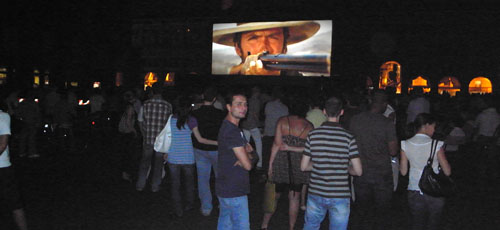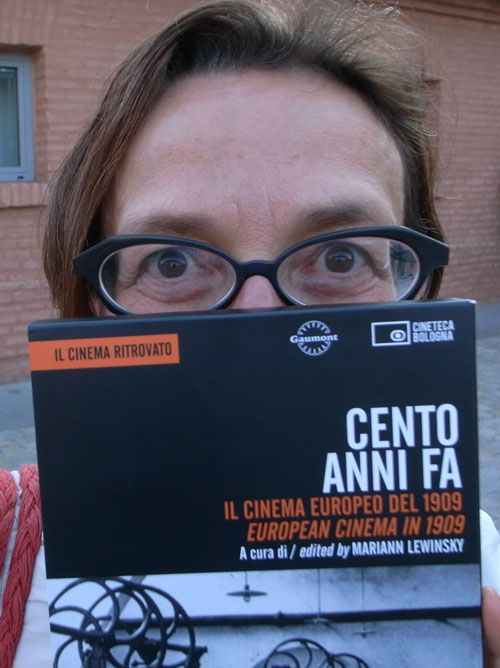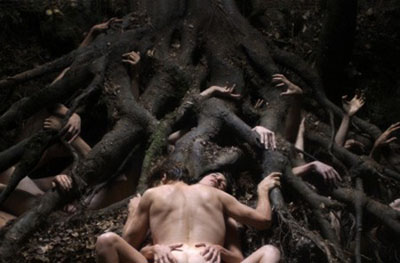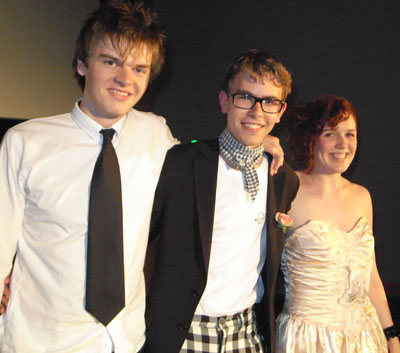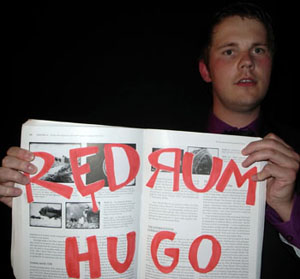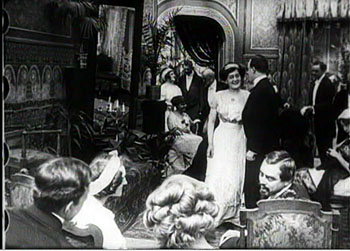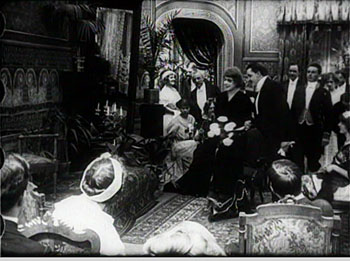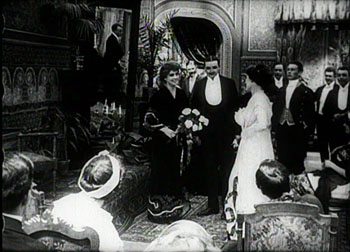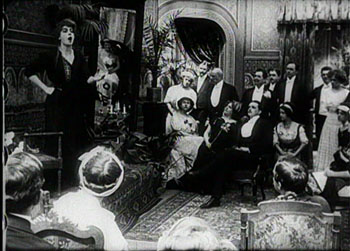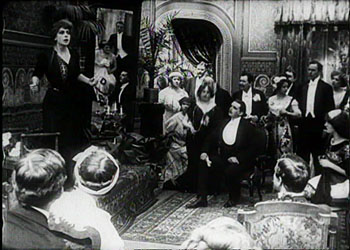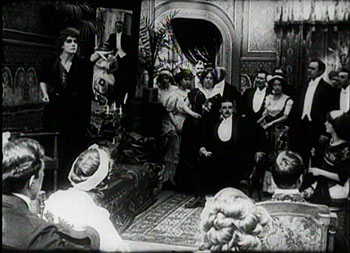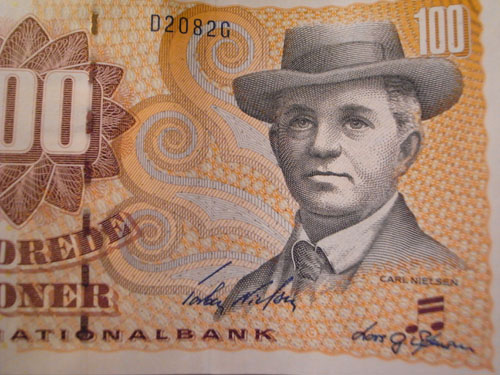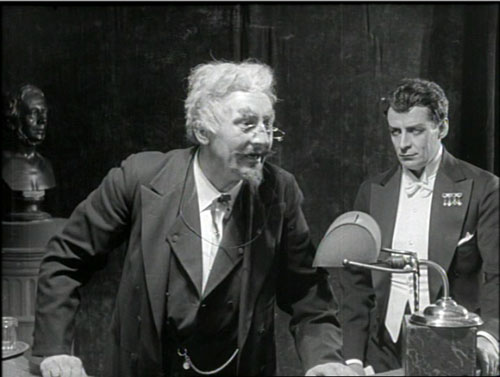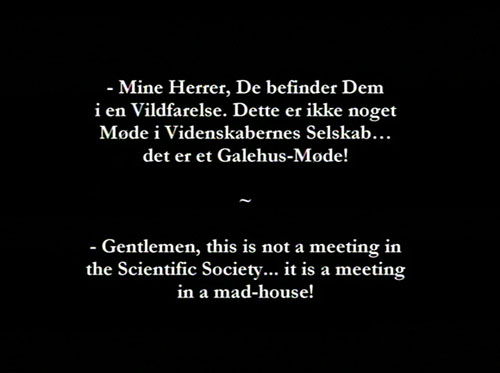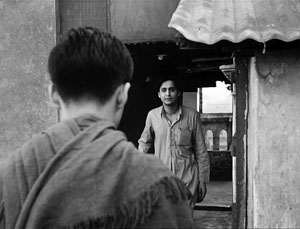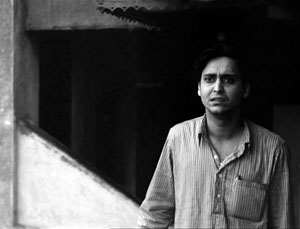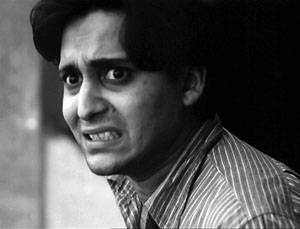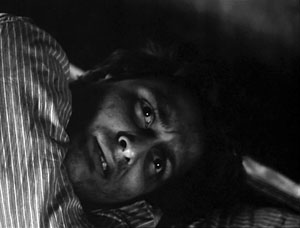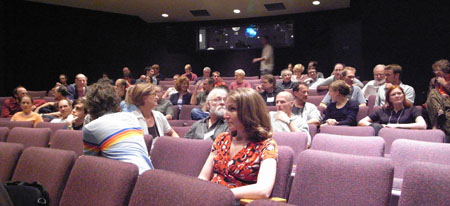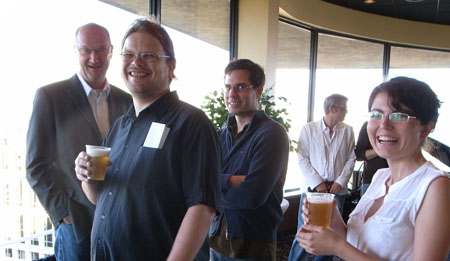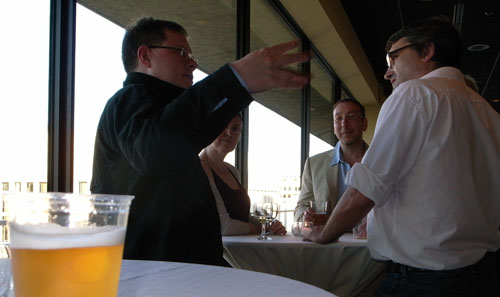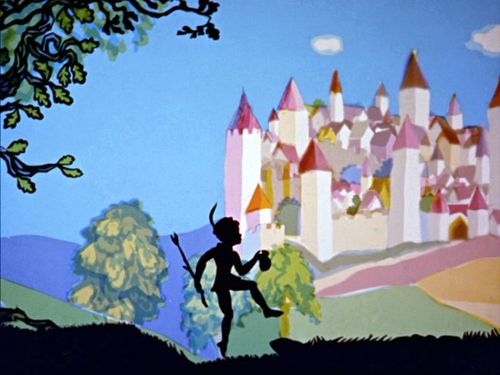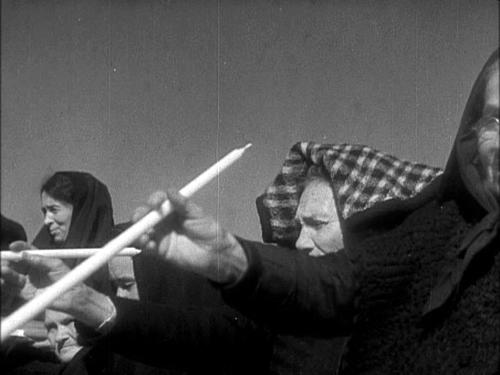Archive for the 'Silent film' Category
Back in Bologna
The newly restored version of The Good, the Bad, and the Ugly on the Piazza Maggiore.
Kristin here-
This year, the main complaint about Il Cinema Ritrovato, the annual festival held by the Cineteca Bologna, is that there’s too much to see. With three venues playing films against each other, plus the 10 pm screenings each evening in the Piazza Maggiore, there’s no way to see everything. Some people complain that the conflicts are becoming worse-but I remember these same complaints about the over-abundance of films coming in previous years as well. Yes, it’s frustrating at times, but being offered more films than one can watch is a problem a lot of people would love to have. Basically one either chooses a couple of threads to follow through or just goes to whatever appeals in any given time slot.
According to the 2009 festival’s newsletter, there were 810 attendees, including 557 from outside Italy.
This year there have been several main focuses: a retrospective of Frank Capra’s silent and early sound films; a portion of the Cinémathèque de Toulouse’s program of Jewish-themed Russian and Soviet cinema from the 1910s to the late 1940s; a selection of color films from the early years of the twentieth century to the 1960s; a survey of the work of Vittorio Cottafavi; the annual “100 years” program, this time from 1909; the sea films of Jean Epstein; the silent Maciste films; and many other items.
Even between the two of us, we could not take in nearly all of the riches on offer, so here’s some of what I managed to see, with David’s report to follow.
An annual hundredth birthday
Each year the festival has a thread of programs of films from one hundred years earlier. This tradition started in 2003, when Tom Gunning was asked to put together groups of films from 1903. Thereafter Mariann Lewinsky took over as programmer for these threads. In recent years, her choices have been supplemented by small groups of films chosen by individual national film archives. This year Tom programmed the 1909 Griffiths and a group of other U. S. titles.
Maybe it’s just my impression, but the hundred-year packages seem to gain in prominence and popularity each year. Presumably in response to such popularity, the festival has just released a DVD with a selection of 22 shorts from this year’s 1909 program: Cento anni fa: Il cinema Europeo del 1909/European cinema in 1909 (running two hours and twenty minutes and presented below by Mariann). It contains only about a fifth of the roughly 100 films screened, but many of the others are available in online archives. DVDs of previous years’ programs are in the works, with 1907 soon to come. The DVD and other publications of the festival are available here.
I managed to see most of the 1909 programs but obviously can mention only a sampling. Undoubtedly the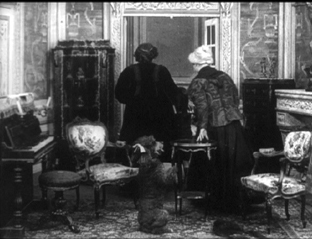 highlight for me and others I talked to was Albert Capellani’s L’Assommoir, notable for its skillful and intricate staging and splendid performances. It looked more like a film from 1912 or 1913. During the comedy, Un chien jaloux (a Gaumont one-reeler by an unknown director, left), pianist Donald Sosin had the audience in stitches by providing barks, whines, and growls as appropriate. (It’s included on the DVD, alas, without the sound effects.)
highlight for me and others I talked to was Albert Capellani’s L’Assommoir, notable for its skillful and intricate staging and splendid performances. It looked more like a film from 1912 or 1913. During the comedy, Un chien jaloux (a Gaumont one-reeler by an unknown director, left), pianist Donald Sosin had the audience in stitches by providing barks, whines, and growls as appropriate. (It’s included on the DVD, alas, without the sound effects.)
French director Alfred Machin contributed two excellent dramatic films, both involving windmills: Le Moulin maudit (also on the DVD) and, in the program of early color films, L’Ame des moulins. Comedy stars were represented by two Cretinetti films and a strange Max Linder film in which he becomes Amoreux de la femme à barbe (“Infatuated with the Bearded Lady”).
There were a great many documentaries giving glimpses into the world of 1909. Airplanes were much in 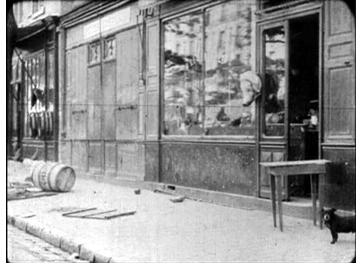 evidence, as were detailed depictions of industries in colonized countries. Mariann confessed herself to be fascinated by the random, unplanned events that intrude into both non-fiction and fiction films of this early period-particularly those shot in the street. As usual with early films, passers-by frequently come to a standstill and gawk at the camera. As she pointed out, the frequent intrusion of dogs into the frame reflected the reality of the time, when numerous homeless animals inhabited cities. We all became very aware of these animals, which David dubbed “Lewinsky dogs.” At the right, a little one that half-enters the end of one shot of a typical chase film, Les tribulations d’un charcutier (director unknown; also on the DVD).
evidence, as were detailed depictions of industries in colonized countries. Mariann confessed herself to be fascinated by the random, unplanned events that intrude into both non-fiction and fiction films of this early period-particularly those shot in the street. As usual with early films, passers-by frequently come to a standstill and gawk at the camera. As she pointed out, the frequent intrusion of dogs into the frame reflected the reality of the time, when numerous homeless animals inhabited cities. We all became very aware of these animals, which David dubbed “Lewinsky dogs.” At the right, a little one that half-enters the end of one shot of a typical chase film, Les tribulations d’un charcutier (director unknown; also on the DVD).
Mariann watched a great number of 1909 films in order to make her selection. Her experience convinced her of what many of us feel, that this was a turning point for the development of film art, though perhaps not as dramatic a one as 1913. Apart from L’Assommoir, Griffith’s The Country Doctor could be pointed to as evidence that the year saw films of a greater complexity and beauty than had previously been released. Griffith may no longer be quite the lone giant of the pre-1920 era that film historians have portrayed. Still, there are touches in The Country Doctor that no other director could have conceived, such as the early shot of the central family strolling through a field of tall grass that hides everything except the doctor’s top hat floating above the stalks.
Reaching 1909 raises the question as to how long these 100-year anniversary programs can continue and what form they should take. With fiction films getting longer in years to come, particularly in Europe, there emerges a problem of including enough of them to give a sense of a single year without having the programs expand even more. Perhaps non-fiction films will figure as an increasing proportion of this thread-with more Lewinsky dogs inadvertently captured for posterity.
A garland of color films
Two programs of early color films demonstrated the various processes: hand-coloring with stencils, tinting, toning, and attempts at photographic color. The only really successful of the latter were two 1912 shorts using the Gaumont system, which provided images in sharp, reasonably true color.
I caught only a few of the features in the color thread. Victor Schertzinger’s Redskin (1929), in two-strip Technicolor, was a beautiful print. Despite its implausibly happy ending, this story was a sophisticated look not only at racial tensions between whites and Indians but also at equally divisive tensions among Indian tribes. Like the other occasional films of the early decades that show the action from the Indians’ standpoint (Griffith’s The Red Man’s View figured in the 1909 program) are remarkably sympathetic to their culture. The color portrays not only the beautiful desert landscapes of the American Southwest but also Navaho blankets and Pueblo sand paintings.
Toward the end of the week, when people asked me what my favorites had been so far, I forgot to mention Pandora and the Flying Dutchman, which had played way back on the opening Saturday. It has a reputation as a bizarre film, and I wasn’t expecting much beyond some glowing color images of two beautiful stars, Ava Gardner and James Mason. But I was pleasantly surprised by its well-handled fantasy tale of the Flying Dutchman visiting a contemporary Spanish seaside resort and finding his true love. In particular a lengthy flashback to the Dutchman’s original crime has a degree of stylization and intensity that allow it to avoid seeming absurd. The tale has an other-worldly quality that recalls some of Powell and Pressburger’s films-enhanced by the presence of cinematographer Jack Cardiff handling the Technicolor.
Unfortunately Track of the Cat (William A. Wellman, 1954) failed to similarly avoid a sense of the absurd in its overheated Tennessee William pastiche set on an isolated farm in the West. Lumbering dialogue lays out explicitly all the tensions among the members of the central family, exacerbated by the depredations of an elusive puma and a visit by the younger brother’s potential fiancée. The reason for its presence in the festival, though, was its color scheme. Wellman set out to make a “black and white film in color,” as the program describes it. Both the snowy landscapes and the interiors are dominated by white, black, and flesh tones, with the sole exception-the Robert Mitchum character’s bright red coat-disappearing from the action partway through.
Not only silents need restoring
Martin Scorsese’s influence hovers over the festival and the Cineteca Bologna. One of the two screening rooms in the Cineteca’s building is the Scorsese (the other being the Mastroianni). In recent years, films from the institution that Scorsese founded, the World Film Foundation, have been screened here. The WFF is dedicated to restoring and preserving films from countries whose archives might lack the resources to handle such major projects. This year’s presentations were Fred Zinnemann and Emilio Gómez Muriel’s Redes (The Wave, 1936), Shadi Abdel Salam’s Al Momia (known in English as The Night of Counting the Years, 1969), and Edward Yang’s A Brighter Summer Day (1991). The foundation also aided in the editing of Ingmar Bergman’s home movies into Images from the Playground (Stig Borkman, 2009).
I had seen The Night of Counting the Years in one of the faded 16mm copies that have long been the only form in which this Egyptian classic was available. The new copy is a vast improvement, finally revealing why this is considered perhaps the great Egyptian film. It is based around a true story from 1881, when a powerful tribe on the west bank at Luxor discovered a cave containing a huge cache of royal mummies and funerary goods that had been hidden away by ancient priests to preserve them after the extensive robbing of their original tombs. The tribe started selling items gradually on the illicit antiquities market, but one of its members revealed the location of the cache to the authorities, allowing them to salvage most of the mummies and their grave goods. The film was beautifully shot on location in the desert and temples of the west bank and provides a meditation on why the young man might have acted against the apparent best interests of himself and his family.
A 1991 Edward Yang film might not seem an obvious candidate for restoration, yet the complete version of A Brighter Summer Day was barely rescued from oblivion. The original negative does not exist, and the print materials on the shorter version were discovered to be moldy. Rescuing these and combining footage from both versions has resulted in a pristine new print of Yang’s greatest achievement. An in-depth look at Taiwanese society a decade after Chiang Kai-chek took over the island, it follows a middle-class boy drawn gradually into gang violence. The new version, which premiered at Cannes earlier this year, looked great on the big screen in the Arlecchino.
This and that
A brief tribute to Harry d’Abbadie d’Arrast included Laughter, the director’s first sound film. A romantic comedy, it stars Frederick March as a witty young composer aspiring to marry a wealthy society woman against her father’s wishes. The film has touches of Holiday and Design for Living, both films yet to be made. Laughter confirms d’Abbadie Arrast’s reputation as a good but lesser filmmaker in the Lubitsch mold.
 We all have reason to celebrate the fact that Georges Méliès’ films went into the European public domain this year. (The films have long been in the public domain in the U.S.) With obstacles to programming out of the way, the festival presented a program in homage, featuring twenty shorts presented by Serge Bromberg, who helped put together the extensive Méliès collection that came out in the U.S. and won the 2008 award for best DVD set here at the Cinema Ritrovato. (It came out in France earlier this year.) While all the films shown are on the DVDs, it was a treat to see them on the big screen. Bromberg provided a lively, if not entirely authentic, running commentary to “explain” the action of the final film, La Fée Carabosse.
We all have reason to celebrate the fact that Georges Méliès’ films went into the European public domain this year. (The films have long been in the public domain in the U.S.) With obstacles to programming out of the way, the festival presented a program in homage, featuring twenty shorts presented by Serge Bromberg, who helped put together the extensive Méliès collection that came out in the U.S. and won the 2008 award for best DVD set here at the Cinema Ritrovato. (It came out in France earlier this year.) While all the films shown are on the DVDs, it was a treat to see them on the big screen. Bromberg provided a lively, if not entirely authentic, running commentary to “explain” the action of the final film, La Fée Carabosse.
Demonstrating that history repeats itself, Belgian film scholar Eric De Kuyper programmed a selection of titles dealing with financial speculation and crisis. These included perhaps the best of several items from Louis Feuillade shown during the week, Le Trust ou les batailles de l’argent (1911). It stars René Navarre, who would soon play Fantômas, as an unscrupulous detective, and the action is more in the thriller mode than a serious depiction of French finances. Also included was a 1916 German feature, Die Börsenkönigin (“The Queen of the Stock Exchange”), with a fine performance by Asta Nielsen as a woman more successful in finance than in love.
More to come from David, on Capra, DVD awards, and personalities glimpsed by a roving camera.
For our previous Cinema Ritrovato entries, see here for 2008 and here, here, and here for 2007. For a thorough discussion of dogs in early film, with comments by Mariann Lewinsky, see Luke McKernan‘s authoritative entry here. On the occasion of Edward Yang’s death in 2007, David offered an homage to him and A Brighter Summer Day here.
Cinema in the world’s happiest place
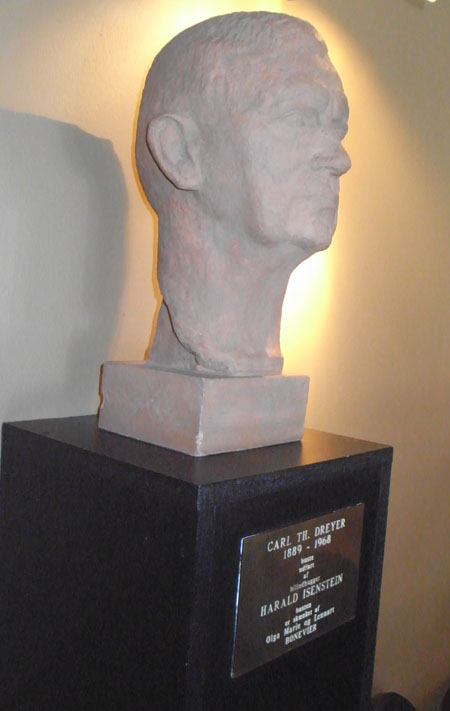
Bust of Carl Theodor Dreyer in the Dagmar Bio, the film theatre he once managed.
DB here:
Denmark was the first foreign country I ever visited. Having never been to Canada or Mexico, I took off in the early summer of 1970. Technically, I touched down in Reykjavik first because I was flying Icelandic Airlines, the Ryanair of its day. You flew Icelandic to get to Europe as cheaply as possible. Although a few people got off at Reykjavik, most of us sat patiently on the tarmac before heading off to Copenhagen.
Ever since that summer, when blinding light invaded my basement room at 4:00 AM, I’ve had a soft spot for Denmark. Ib Monty, then head of the Danish Film Archive, kindly screened for me all the Dreyers I hadn’t seen, and in spare moments I learned the joys of Copenhagen’s canals and restaurants. Six years later I would spend nearly another whole summer there watching the same Dreyer films on a flatbed viewer in the archive vaults, a somewhat renovated army fort. Many visits later, including a couple to the charming city of Aarhus, I’m still a fan of the Danes. They manage to be modest yet accomplished, hard-working yet hard-partying. They put cultural figures like composer Carl Nielsen on their currency. We’re told that they are the happiest people in the world. I don’t doubt it.
So it was with special pleasure that I returned to Copenhagen for two weeks in June. The second week was consumed by a day of talks and seminars at the University of Copenhagen and then by the convention of the Society for Cognitive Studies of the Moving Image. I’ve given two long-winded previews of the latter event, and I hope to have more coverage of it in a later entry. Today, a smorgasbord of other things Danish–without, alas, mention of H. C. Andersen, Vilhelm Hammershøi, or Victor Borge.
Chaos reigns, more or less
The organizers of our SCSMI event pulled off a coup: Not only were we shown Antichrist in Asta, one of the Danish Film Institute‘s fine theatres, but along came Lars von Trier to spend an hour talking about it afterward.
The film struck me as mid-level von Trier, not as good as The Idiots, The Kingdom, Dancer in the Dark, and The Boss of It All (though others would call me out for admiring this last). It lacks the element of game-playing that I enjoy in what von Trier calls his “mathematical” works, most famously The Five Obstructions. Instead, Antichrist provides perhaps the most unadulterated surge of emotion and mystical/ mythical implication to be found in all his work. It tries to be an intellectual horror film somewhat in the David Lynch mode, with a plaintive, roiling soundtrack and unearthly visions, including a fox snarling, “Chaos reigns!”
I was surprised that the elements so sensationalized by the press are pretty brief; snip out four brief shots and you’d have a ferocious but much less controversial movie. It starts as your basic two-handed psychodrama, with a couple tearing at each other. As in those other duologues Strindberg’s The Stronger and Bergman’s Persona, the film presents a fluctuating power struggle–the man trying to rule through cool rationality, the woman tapping depths of grief and repressed anger.
Yet the film goes beyond psychodrama into realms of history and myth. The grieving mother rises into demonic fury by getting in touch with witchcraft, the subject of her unfinished university thesis. Antichrist could thus be read as an exercise in misogyny or as a celebration of woman’s primal energies. (For what it’s worth, several women in our audience said they liked the film a lot.) Of course the whole thing looks very fine, with a stylized black-and-white prologue (some shots taken at 1000 frames per second), and the rest rendered in that dodging, wandering camera style von Trier and the brilliant cinematographer Antony Dod Mantle have made their own.
The entire Q & A with von Trier, moderated by Peter Schepelern, is available as an audio file on the SCSMI conference website, perhaps to be followed by a video record. Some excerpts:
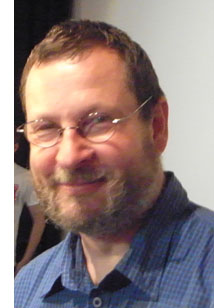 Von Trier explained that the film came out of a period of prolonged depression. “I used this project to get out of bed [every day].” Yet it’s less personal than his other works, he thinks, because it lacks his usual interest in rules, obstacles, and formal play–“a little more messy.” And he feels that by not operating the camera, he lost some intimacy with actors.
Von Trier explained that the film came out of a period of prolonged depression. “I used this project to get out of bed [every day].” Yet it’s less personal than his other works, he thinks, because it lacks his usual interest in rules, obstacles, and formal play–“a little more messy.” And he feels that by not operating the camera, he lost some intimacy with actors.
The Antichrist project seems to have brought out a mystical side of von Trier that hasn’t been so prominent in his public image. Years ago he conceived a film in which Satan created the earth, but that dissolved. Certain elements of the film, especially the emblematic forest creatures–blackbird, deer, and fox–come from his interest in shamanism. He has, he claims, traveled in alternative worlds with animal guides. “Never trust the first fox you meet.”
Is it a horror film? At least it has sources in the genre. Uncharacteristically, von Trier prepared for the project by revisiting not only classic horror films he admired, The Exorcist, The Shining, and Carrie, but also The Ring and Dark Water. He was particularly influenced in his youth by Altered States, another venture into “fantasy travels.”
He commented on how his free-camera technique imposed certain constraints in sound work. If you execute a “time cut”–that is, cutting directly to a new scene starting on a shot of a character–you must alter the sound somehow; otherwise the audience is likely to think that the action is continuous. This got me thinking about how The Boss of It All violated that convention, when each continuity cut actually yields a different sound ambience because each of the many cameras is miked separately.
Why is the film dedicated to Tarkovsky? “It was a way of getting rid of psychology.”
“I do not work with the audience in mind. I make films I would like to see myself.”
The Last is not least
Last Friday night the filmmaking program at the University of Copenhagen gave out its student film awards. The crowd was large and boisterous, the atmosphere festive and tipsy. I was honored to present the prize for the best fiction film, which went to desidst (punning on De sidst, “The Last”). The three winning filmmakers, pictured above, were Sissel Marie tonn-Petersen, Niels Holst-Jensen, and Toke Westmark Steensen.
Before I read the result, though, I was confronted with some damaging evidence in a copy of Film History: An Introduction.
Peaking in the 1910s
During my first week in Copenhagen, I was viewing Danish films from 1911 to 1915. As long-time readers of this blog know, I’m fascinated by the films of the 1910s, and Denmark boasts some of the most sophisticated works of the time. Thomas Christensen and Mikael Brae of the Danish Film Archive kindly let me watch several films, mostly from the once-mighty Nordisk film company.
The most remarkable films I saw were Ekspeditricen (1911), Dyrekøbt Aere (“Hard-Won Honor,” 1911), and Under Blinkfyrets Straaler (“Under the Beam of the Lighthouse,” 1913). All three of these offer sophisticated examples of the dominant storytelling technique of that period, what has been called the tableau style.
I can’t offer any visual analyses here, as I don’t have frame stills available in digital form, but here’s an example of the kind of thing I’m studying, taken from August Blom’s The Ballet Dancer (1911). Camilla (Asta Nielsen) has been seduced by Jean, a man-about-town, and she has come to sing for a society soirée at which Jean is present. But Jean is also carrying on an affair with the host’s wife.
The scene starts with the host Simon walking with his wife to the middle of the salon. Note the mirror in the upper area of the frame, just left of center.
She goes out frame right, and the host welcomes Camilla, bringing her to the central zone of the shot.
The hostess returns from off right to greet Camilla. Now we can see Camilla’s lover Jean in the mirror.
The hostess leaves the frame again, her husband settles into a chair, and Camilla starts to sing. But in the mirror we can see Jean bending over to kiss the hostess.
Soon Camilla notices Jean’s flirtation, and he straightens up.
Camilla interrupts her song, shouting and thrusting an accusing finger at the couple across the room.
I especially like the way in which Camilla’s finger points both at the offscreen couple and directly at her guilty lover’s reflection. If we haven’t noticed Jean’s infidelity yet, we certainly should now.
Today the same scene would be handled with lots of cutting and point-of-view framings, but the mirror allows Blom to pack a single long shot with simultaneous actions. (Mirrors were something of a signature device in Danish films of the period.) It’s a nice example of Charles Barr’s notion of gradation of emphasis, a principle that was at the heart of the intricate, sometimes exquisite ensemble staging we find so often in the 1910s.
Far from being a static, “theatrical” rendering of the action, the tableau technique looks forward to the deep-space stagings we associate with Welles and Wyler, as well as the distant long-take style of Theo Angelopoulos and Hou Hsiao-hsien. Studying film history is often our best way to understand the cinema of our moment, and perhaps of our future. At a more primal level, a week of prime examples of the tableau tradition gave me a fine dose of Danish happiness.
For background on the Society for Cognitive Studies of the Moving Image conference this year, try here and here. Earlier blog entries on this site have dealt with other aspects of 1910s cinema: director Yevgenii Bauer, tight staging in De Mille’s Kindling (1915), the emergence of classical film style around 1917, editing in William S. Hart movies, the years 1913 and 1918, and the triumph of Doug Fairbanks. I’ve proposed more complete accounts of 1910s staging strategies, and their impact on film history, in On the History of Film Style and Figures Traced in Light: On Cinematic Staging.
An excellent introduction to Danish cinema of this period is Ron Mottram’s 1988 Danish Cinema before Dreyer, a book which deserves to be reissued or put online. You can sample Danish 1910s films at the DFI archive database, where several clips are posted. Try these fragments: København ved nat (1910), Den frelsende Film (1916), and Kaerlighedsvalsen (1920). DVD versions of some 1910s classics, including The Ballet Dancer, can be ordered from the DFI Cinemateket shop; in the US, the titles are available for institutional purchase from Gartenberg Media. Everyone interested in silent cinema should own the Dreyer, Christensen, Psilander, and Asta Nielsen discs.
Invasion of the Brainiacs II
DB here:
What gives movies the power to arouse emotions in audiences? How is it that films can convey abstract meanings, or trigger visceral responses? How is it that viewers can follow even fairly complex stories on the screen?
General questions like this fall into the domain of film theory. It’s an area of inquiry that divides people. Some filmmakers consider it beside the point, or simply an intellectual game, or a destructive urge to dissect what is best left mysterious. Many readers consider it academic bluffing, another proof of Shaw’s aphorism that all professions are conspiracies against the laity.
These complaints aren’t quite fair. Early film theorists like Hugo Münsterberg, Rudolf Arnheim, André Bazin, and Lev Kuleshov wrote clearly and often gracefully. Even Sergei Eisenstein, probably the most obscure of the major pre-1960 theorists, can be read with comparative ease. Moreover, generations of filmmakers have been influenced by these theorists; indeed, some of these writers, like Kuleshov and Eisenstein, were filmmakers themselves.
But those day are gone, someone may say. Does contemporary film theory, bred in the hothouse of universities and fertilized by High Theory in the humanities, have any relevance to filmmakers and ordinary viewers? I think that at least one theoretical trend does, if readers are willing to follow an argument pitched beyond comments on this or that movie.
That is, film theory isn’t film criticism. Its major aim is more general and systematic. A theoretical book or essay tries to answer a question about the nature, functions, and uses of cinema—perhaps not all cinema, but at least a large stretch of it, say documentary or mainstream fiction or animation or a national film output. Particular films come into the argument as examples or bodies of evidence for more general points.
In about three weeks, about fifty people will gather at the University of Copenhagen to do some film theory together. It’s the annual meeting of the Society for Cognitive Studies of the Moving Image. I talked about the group last year (here and here) in the runup to our Madison event.
The sort of theorizing we’ll do, for all its variety, is in my view the most exciting and promising on the horizon just now. It’s also understandable by anyone interested in puzzles of cinematic expression, and it has powerful implications for creative media practice.
We’ll also be in Copenhagen for Midsummer Night, which is always pleasant. Go here for the lovely song that thousands of Danes will try to sing, despite terminal drunkenness. No real witches burned, however.
Concordance and convergence
But back to topic: Puzzles of cinematic expression, I said. What puzzles? Well, films are understood. Remarkably often, they achieve effects that their creators aimed for. Michael Moore gets his message across; Judd Apatow makes us laugh; a Hitchcock thriller keeps us in suspense. What enables movies to reliably achieve such regularity of response?
It’s not enough to say: Moore hammers home his points, Apatow creates funny situations, Hitchcock puts the woman in danger. Any useful explanation subsumes a single case to a more general law or tendency. So a worthwhile explanation for these cinematic experiences would appeal to more basic features of artworks, cultural activities, or our minds. We can pick up on Moore’s message because we know how to make inferences within certain contexts. We can laugh at a joke because we understand the tacit rules of humor. We recognize a suspenseful situation because… well, there are several suggestions.
This sort of question is largely overlooked by theorists of Cultural Studies, another area of contemporary media studies. They typically emphasize difference and divergence, highlighting the varying, even conflicting ways that audiences or critics interpret a film.
Studying how viewers appropriate a film differently is an important enterprise, but so is studying convergence. Arguably, studying convergence has priority, since the splits and variations often emerge against a background of common reactions. A libertarian can interpret Die Hard as a paean to individual initiative, while a neo-Marxist can interpret it as a skirmish in the class war, but both agree that John and Holly love each other, that her coworker is a weasel, and that in the end John McClane’s defeat of Hans Gruber counts as worthwhile. Both viewers may feel a surge of satisfaction when McClane, told by a terrorist he should have shot sooner, blasts the man and adds, “Thanks for the advice.” What enables two ideologically opposed viewers to agree on so much?
Films aren’t just understood in common; they arouse remarkably similar emotions across cultures. This is a truism, but it’s been too often sidestepped by post-1960 film theory. Who, watching The World of Apu, doesn’t feel sympathy and pity for the hero when he learns of the sudden death of his beloved wife? Perhaps we even register a measure of his despair in the face of this brutal turn of events.
We can follow a suite of emotions flitting across Apu’s face. I doubt that words are adequate to capture them.
Are these facial expressions signs that we read, like the instructions printed on a prescription bottle? Surely something deeper is involved in responding to them—for want of a better word, fellow-feeling. Indians’ marriage customs and attitudes toward death may be quite different from those of viewers in other countries, but that fact doesn’t suppress a burst of spontaneous sympathy toward the film’s hero. We are different, but we also share a lot.
The puzzle of convergence was put on the agenda quite explicitly by theorists of semiotics. Back in the 1960s, they argued that film consisted of more or less arbitrary signs and codes. Christian Metz, the most prominent semiotician, was partly concerned with how codes are “read” in concert by many viewers. Today, I suppose, most proponents of Cultural Studies subscribe to some version of the codes idea, but now the concept is used to emphasize incompatibilities. So many codes are in play, each one inflected by aspects of identity (gender, race, class, ethnicity, etc.), that commonality of response is rare or not worth examining.
A complete theoretical account, if we ever have one, would presumably have to reckon with both differences and regularities. The dynamic of convergence and divergence is a central part of one arena of film studies that has, for better or worse, been called cognitivism.
Sampling
Gathering for Uri Hasson‘s keynote lecture, SCSMI 2008.
The cognitive approach to media remains a pretty broad one, and the Society for Cognitive Studies of the Moving Image hosts a plurality of approaches at its annual meetings. SCSMI has become home to media aesthetes, empirical researchers, and philosophers in the analytic tradition who are interested in interrogating the concepts used by the other two groups. Last year’s gathering, at our campus here in Madison, created a lively dialogue among these interests.
For instance, some of us Film Studies geeks wonder why people so consistently ignore mismatched cuts. Dan Levin’s ingenious experiments on “change blindness” provide a hilarious rejoinder. In one study conducted with Dan Simons, a stooge asks directions of an innocent passerby. As they’re talking, a pair of bravos carry a plank between them, and another confederate is substituted for the first one.
You guessed it. Most subjects don’t notice that the person they’re talking to has changed into somebody else! So how can we worry about mismatched details in cuts? Actually, Dan’s research isn’t just deflationary. It helps spell out particular conditions under which change blindness can occur.
Another stimulating talk was offered by Jason Mittell. He asked how long-running prime-time TV serials can solve the problem of memory. In this week’s episode what strategies are available to recall the most relevant action of earlier episodes? How can previous action be presented without boring faithful fans? Jason, who has a new book on American TV and culture out this spring, went beyond describing the strategies. He suggested how they can become a new source of formal innovation, as in the Death of the Week in Six Feet Under.
Sermin Ildirar of Istanbul University presented the results of a study on adults living in a village in South Turkey. These viewers were older, ca. 50-75, and—here’s the interesting part—had never seen films or TV shows. To what extent would they understand “film grammar,” the conventions of continuity editing and point-of-view, that people with greater media experience grasp intuitively? To facilitate comprehension, the researchers made film clips featuring familiar surroundings.
The results were intriguingly mixed. Some techniques, such as shots that overlapped space, were understood as presenting coherent locales. But most viewers didn’t grasp shot/ reverse-shot combinations as a social exchange. They simply saw the person in each shot as an isolated figure.
The discussion, as you may expect, was lively, concerning the extent to which a story situation had been present, the need to cue a conversation, and the like. I found it a sharp, provocative piece of research. Stephan Schwan, who worked with Sermin and Markus Huff, has become a central figure studying how the basic conventions of cutting and framing might be built up on the basis of real-world knowledge, and both he and Sermin are back at SCSMI this year.
Stephan Schwan, Thomas Schick, Markus Huff, and Sermin Ildirar, with Johannes Riis in the background; SCSMI 2008.
There were plenty of other stimulating papers: Tim Smith’s usual enlightening work on points of attention within the frame, Johannes Riis on agency and characterization, Paisley Livingston on what can count as fictional in a film, Patrick Keating on implications for emotion of alternative theories of screenplay structure, Margarethe Bruun Vaage on fiction and empathy, and on and on.
One of the best things about this gathering was that the ideas were sharply defined and presented in vivid, concrete prose. I can’t imagine that ordinary film fans wouldn’t have found something to enjoy, and of course many of these matters lie at the heart of what filmmakers are trying to achieve. Indeed, some filmmakers regularly give papers at our conventions. The much-sought link between theory and practice is being made, again and again, in the arena of the SCSMI.
Last year I came to believe that this research program was hitting its stride. My hunch is confirmed by this year’s gathering in Copenhagen. The department of media studies there has long been a leader in this realm. You can download a Word version of the schedule here.
Lest you think that the conference participants don’t talk much about particular movies, I should add that there’s one film we’ll definitely be talking about this time around. Our Copenhagen hosts have arranged for a screening of von Trier’s Antichrist.
Next time: Going deeper into cognitivism, and three recent explorations.
Malcolm Turvey makes a point to Trevor Ponech and Richard Allen, SCSMI 2008.
Kristin and I have talked about pictorial universals elsewhere on this site. See her blog entry on eyeline matching in ancient Egyptian art, and my comments on “representational relativism” here.
Images at the top of this entry are taken from the Danish film Himmelskibet (The Space Ship, aka A Trip to Mars, 1918).
Forgotten but not gone: more archival gems on DVD
Kristin here-
We don’t make a practice of regularly reviewing DVDs here, but when a special release comes along that makes historically important, hard-to-see films available, we like to point it out. David spotlighted the new Criterion set of Shimizu Hiroshi films, and this week it’s Lotte Reiniger and Belgian experimental silents.
The lady with the flying scissors
Up until recently, the name Lotte Reiniger meant little to most people. Some were aware that she, rather than Walt Disney, had made the first animated feature film, The Adventures of Prince Achmed (1926). Some had been lucky enough to see a few of her shorts, created with a delicate silhouette technique using hinged, cut-out puppets. She had pioneered the approach in the late 1910s and continued to use it in much the same way up to her last films in the 1960s and 1970s.
Now, however, in another of the marvelous revelations that DVDs have made possible, we are in the process of having virtually all of Reiniger’s surviving work become available over a short stretch of time.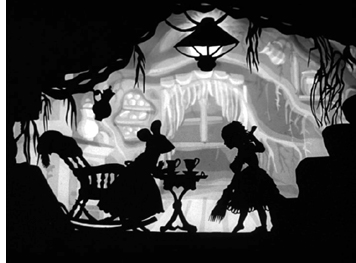
Early this year the British Film Institute released a two-disc set, “Lotte Reiniger: The Fairy Tale Films.” It concentrates on a series of thirteen films Reiniger and her husband Carl Koch made for television during an intensely productive period in 1954-55.
Two of these, Aladdin and the Magic Lamp and The Magic Horse, recycle footage from The Adventures of Prince Achmed, the elaborateness and delicacy of which stand out. Yet the rest of the series, though clearly made on a lower budget and remarkably quickly, are consistently excellent, with considerable detail of gesture and a great deal of wit (as in Thumbelina, right).
The rest of the program includes the 1922 Cinderella (left) which is Reiniger at her prime-though the detail of 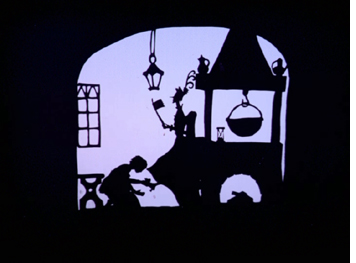 one of the stepsisters slicing off part of her foot to make it fit in the tiny slipper may be a bit grim for some children. The Death-Feigning Chinaman (1928) is a fascinating item, a sequence cut from Prince Achmed and released as a free-standing tale. Reiniger made The Golden Goose (1944) in Berlin late in the war, as she cared for her ailing mother. It was not edited into a silent version until 1963, with a soundtrack being added for TV in 1988. It’s a real treasure that belies the grim circumstances of its making.
one of the stepsisters slicing off part of her foot to make it fit in the tiny slipper may be a bit grim for some children. The Death-Feigning Chinaman (1928) is a fascinating item, a sequence cut from Prince Achmed and released as a free-standing tale. Reiniger made The Golden Goose (1944) in Berlin late in the war, as she cared for her ailing mother. It was not edited into a silent version until 1963, with a soundtrack being added for TV in 1988. It’s a real treasure that belies the grim circumstances of its making.
The material following chronologically after the thirteen television episodes consists of three films. One, The Little Chimney Sweep, is the only disappointment in the program. It’s a revised, abridged version of a film from 1934, and the voiceover narration and truncated action downplay the subtle touches and charm that characterize all the other films. Fortunately the original survives and will be presented in the DVD program of the musical films.
The other two films are in color. I had never seen a color Reiniger film, but both are lovely, like old-fashioned children’s book-illustrations come to life. Jack and the Beanstalk (see image above) is the more polished of the two. Here black silhouette figures move amid brightly colored, stylized landscapes. It doesn’t sound like it should work, but it does. The Frog Prince is more what one would expect, with hinged colored puppets replacing the dark silhouettes. The result is highly engaging, though the lack of expression in the characters, which works so well for the dark silhouettes, might become too apparent in a film lasting more than a few minutes.
Wonderful though it is to have this big dose of Reiniger made available, I wish that the BFI had organized its presentation more helpfully. For a start, there’s no indication that this set is part of an ongoing series that will eventually make most of the filmmaker’s work available. No reference to that fact that the BFI already put out The Adventures of Prince Achmed in 2001, accompanied by an hour-long documentary, Lotte Reiniger: Homage to the Inventor of the Silhouette Film, directed by Katja Raganelli (which isn’t is also on the American disc released by Milestone). No announcement that a set of Reiniger’s music-based animated shorts is due out later this year or that the second set of GPO advertising shorts also due soon will include some Reiniger works (The Tocher and The H.P.O.), though brief references to that future release are buried in a couple of the program notes. (The two Reiniger films are already available on a British DVD called The GPO Story.) Only diligent trawling about the internet reveals such things. There’s a good summary of the situation in the DVD Times review of the fairy-tales set.
The program notes are fairly informative if you want plot synopses, but they provide virtually no historical context. There’s no general introduction to the program or the overall series, just a brief biographical note on Reiniger and notes on the individual films. I would have appreciated some information on the 1954 television series for which many of the films in the set were made.
Speaking of plot synopses, the notes for The Death-Feigning Chinaman miss a key narrative point. The title character, Ping Pong, gets drunk and starts eating a cooked fish that a young couple give him. The description continues, “Ping Pong eats a little of the fish, then tramples it in a drunken rage and falls down in a stupor.” This is a key moment, since his apparent death launches a snowballing accumulation of confusion, confession, and near execution. What actually happens is that Ping Pong chokes on a bone while eating the fish, and it paralyzes him. At the climax, an insect lands on his nose, he sneezes, the bone flies out of his mouth, and he emerges from his “death.”
Another instance of disorganization comes with a charming little color film, The Frog Prince, from 1961. It 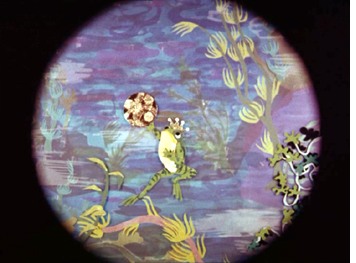 was originally creates as an interlude in a stage pantomime, and on the disc it is presented silent. The program note comments, “No evidence of a soundtrack survives, and indeed sound seems unbefitting for a pantomime interlude. Although surprisingly, the aperture format of this mute positive print is 1:1.375 with an unused soundtrack area.” Yet the short documentary included in the set, The Art of Lotte Reiniger, includes The Frog Prince in its entirety, accompanied by lively and quite appropriate orchestral music. Given that Reiniger’s own production company made this film and she participated in its creation, it seems highly probable that the music used in the documentary was either the intended accompaniment for the film or at least considered suitable for it. A case of the right hand not knowing what the left is doing when this package was being put together, I guess.
was originally creates as an interlude in a stage pantomime, and on the disc it is presented silent. The program note comments, “No evidence of a soundtrack survives, and indeed sound seems unbefitting for a pantomime interlude. Although surprisingly, the aperture format of this mute positive print is 1:1.375 with an unused soundtrack area.” Yet the short documentary included in the set, The Art of Lotte Reiniger, includes The Frog Prince in its entirety, accompanied by lively and quite appropriate orchestral music. Given that Reiniger’s own production company made this film and she participated in its creation, it seems highly probable that the music used in the documentary was either the intended accompaniment for the film or at least considered suitable for it. A case of the right hand not knowing what the left is doing when this package was being put together, I guess.
The Art of Lotte Reiniger is a fascinating little film, despite the rocky sound quality of the surviving print. The filmmaker shows off her storyboards and puppets, but the really amazing thing is watching how quickly she cuts the silhouettes, freehand, out of black paper.
For those who read German and want as full a dose of Reiniger as possible, an 8-disc box is already available, including Prince Achmed, the fairy-tale and music shorts, and a two-disc set called “Dr. Dolittle & Archivschatze” (Dr. Dolittle and archive treasures).
Animation historian William Moritz provides a biographical note and filmography for Reiniger here. It or something like it would have been a helpful introduction to the DVD booklet.
“This is not a pipe,” the movie
As of February of this year, I have been visiting the Cinémathèque royale de Belgique/the Koninklijk Film Archief, or, unofficially, the Royal Film Archive of Belgium, for thirty years now. (David made his first visit there in 1982.) It has been a tremendous resource for us, and its staff, especially current archive director Gabrielle Claes, have invariably been generous and welcoming.
Being a government-supported institution in a bilingual country, the Archive renders all texts in French and Flemish, from the monthly screening schedules to the subtitles that sprawl across the bottoms of frames. Now, as part of a renovation of the screening venue and museum space, the Royal Film Archive has abandoned all that verbiage and officially renamed itself the Cinematek. That’s not a real word in any language, but it conveys more or less the same thing in French, Flemish, and English. I suspect that the epic subtitles will remain. For full details of the new facility and programming, go here.
Before the name change, the archive had started a DVD series awkwardly entitled “filmarchief dvd’s – les dvd de la cinémathèque.” These are collections of archival films mostly relating to Belgium, and a lot of them are documentaries. The series includes an excellent new two-disc set, “Avant-Garde 1927-1937.” (The archive also publishes modern films, mostly in Flemish.) It’s in fact a trilingual release, with the subtitle “Surréalisme et expérimentation dans la cinéma belge/Surealisme en experiment in de Belgische cinema/Surrealism and experiment in Belgian cinema.” The text of the detailed accompanying booklet is in all three languages, and the discs also offer options for subtitles in any of the three. The producers have taken great care with the music, commissioning Belgian musicians to compose and perform modernist chamber-orchestra scores. These vary considerably, effectively matching the tone and style of each film. The design of the packaging is practical and sturdy: it’s a small hard-cover book with the pages containing the text and the discs fastened onto the endpages.
Belgian silent experimental cinema might sound a bit obscure, but recall that the country had a pretty prominent role in the Surrealist movement, mostly famously with painter René Magritte. Categorizing all the films on these discs as Surrealist is a bit of a stretch. Some fit that designation, but others are more like city symphonies and political documentaries, and a couple defy definition. But if the label attracts more attention, all the better. Henri Storck and Charles Dekeukeleire, the filmmakers whose works dominate the set, are major filmmakers, and the two shorts that fill out the discs are of historical interest–and genuinely Surrealist.
Storck has long been better remembered than Dekeukeleire. He helped form the national film archive in the late 1930s, and he went from experimental cinema in the 1920s to become a prominent documentarist for the rest of his career. His collaboration with Joris Ivens, Misère au Borinage (1933), is a classic in the genre.
Disc One
Storck dominates the first disc with four titles. his Images d’Ostende (1929) is a quiet study of the seaside resort town where the filmmaker was born. It’s a lovely debut, revealing his eye for composition and 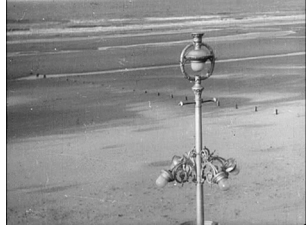 feeling for nature. There’s nothing Surrealist about it. It’s closer to some of the more familiar lyrical studies of the era, like Ivens’ Rain. The accompanying music is modernist with a 1920s feel; a soprano voice weaves subtly through the instrumentation.
feeling for nature. There’s nothing Surrealist about it. It’s closer to some of the more familiar lyrical studies of the era, like Ivens’ Rain. The accompanying music is modernist with a 1920s feel; a soprano voice weaves subtly through the instrumentation.
The second film, Pour vos beaux yeux (1929), is a fiction film and definitely Surrealist. The story is minimal. A man finds a false eye lying on the ground. He visits a prosthetics shop, makes plans involving maps, and contemplates the eye on a pedestal while wearing a peculiar cylindrical mask (left). Eventually he wraps the eye in a box and attempts to mail the package.
The program notes claim that Storck could not have seen Un chien andalou when he made Pour vos beaux 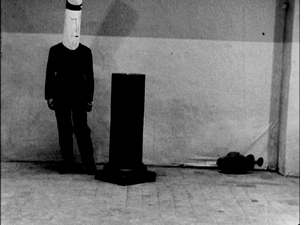 yeux. That’s difficult to believe, given that the film seems almost to be an elaborate riff on that film’s eyeball-slitting shot. There are definite references to Ballet mécanique, and the seashells that line the desk where the protagonist wraps the package recall Germaine Dullac’s La coquille et le clergyman.
yeux. That’s difficult to believe, given that the film seems almost to be an elaborate riff on that film’s eyeball-slitting shot. There are definite references to Ballet mécanique, and the seashells that line the desk where the protagonist wraps the package recall Germaine Dullac’s La coquille et le clergyman.
Storck had obviously seen Eisenstein films as well, including October. Histoire du soldat inconnu (1932) is made up of footage from 1928, when an anti-war treaty had been signed. The filmmaker uses intellectual montage to make the point that militarism and the institutions that support it are clearly going to make mincemeat of the treaty’s ideals. The approach is pretty simple, juxtaposing marching soldiers with religious processions. At that point in film history, it was probably still a pretty novel idea that one could cut from a pompous politician speaking to a small dog yapping. By now it looks pretty heavy-handed.
Indeed, the next film in the program, Sur les bords de la caméra (also 1932, also incorporating found footage from 1928) uses the same technique with more restraint. It reminded me a little of Bruce Conner’s A Movie, where odd juxtapositions gradually come to seem more sinister and finally disastrous. Scenes of groups exercising, religious processions, shots in traffic and in prison, all add up to a suggestion that a whole population is voluntarily doing regimented things controlled by the police and other authorities.
On my first visit to the Royal Film Archive back in 1979, one of the titles on my to-see list was Impatience, an experimental film by Charles Dekeukeleire. I had seen a reference to it in the British-Swiss journal of film art, Close-Up. Jacques Ledoux, director of the archive, was delighted that anyone should want to see a film by this nearly forgotten director. He urged me to see Deukeukeleire’s other experimental films, all made in the 1920s and early 1930s before he, too, moved into documentary work.
I saw Combate de boxe (1927), made when Dekeukeleire was only 22. Combining negative and positive footage, hand-held camera, rapid montage, masks–pretty much all the devices of the European avant-garde of the day–he strove to give the subjective impressions of the two combatants in the ring. That’s the first of four Dekeukeleire films in this set. It’s an impressive film by a very young, talented man–but not one that suggests the highly original artist that he would soon become.
The last film on disc one skips forward to 1932, when Dekeukeleire made Visions de Lourdes. Beginning with conventionally beautiful mountain vistas, the film slowly moves toward the area around the sacred grotto and finally to shots within the grotto itself. There are shots of shop-windows full of Lourdes souvenirs (including candy made with holy water from the shrine), but these come in fairly late, avoiding a blatant focus on the commercialization of the site and the notion that those hoping to be healed of illness and deformity are being exploited.
Clearly Dekeukeleire has a more original sense of composition than does Storck. There is a motif of old women selling candles that the filmmaker turns into a series of shots that look like something out of Eisenstein’s Mexican footage–which of course Dekeukeleire could not have seen. (See the image at the bottom, which has enough gap framing to impress even David.) The film is critical of the church, but subtly so–and perhaps mainly because we’ve been cued to take it that way, especially in this case by the dissonant music. I wonder if, in a different context and with a cheerier soundtrack, some of the devout might actually take it as a serious tribute to the healing powers of the saint. They would be mistaken, I think, but the film is understated enough that I think it’s possible.
Disc Two
Dekeukeleire’s two masterpieces, however, were made between these Combat de boxe and Visions de Lourdes. Impatience (1928) is an abstract film that hints maddeningly at a possible narrative situation that never develops. Instead, shots of 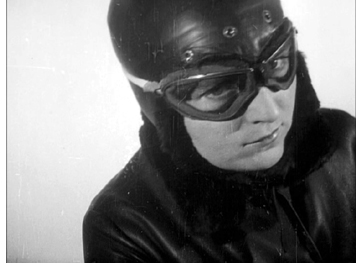 four “personnages,” a woman, a motorcycle, a mountainous landscape, and three abstract blocks are edited together. None of these elements is every seen in a shot with any of the others. Rapid montage, vertiginous views against blank backgrounds, upside-down framings, and ruthless, unvarying stretches of repetition make this one of the most challenging, opaque films of its era.
four “personnages,” a woman, a motorcycle, a mountainous landscape, and three abstract blocks are edited together. None of these elements is every seen in a shot with any of the others. Rapid montage, vertiginous views against blank backgrounds, upside-down framings, and ruthless, unvarying stretches of repetition make this one of the most challenging, opaque films of its era.
Perhaps in the wake of post-World War II experimental cinema, where spectator frustration and the denial of conventional beauty and entertainment are often part of a film’s intent (Michael Snow’s Wavelength comes to mind), we are better equipped to understand a film like Impatience, which in its day baffled most reviewers and audiences. Indeed, now Impatience is widely considered to be the best of Dekeukeleire’s avant-garde films.
I think that’s partly because one can at least classify it as an abstract film. For me, his next and longest experimental work, Histoire de detéctive (1929), is even more daring. It purports to present a story in which a 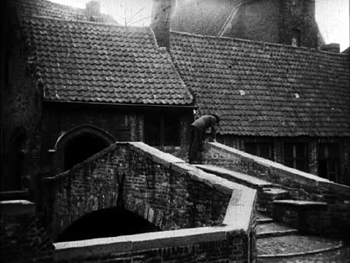 detective named T is hired by Mrs. Jonathan to investigate why her husband has been behaving in a peculiar fashion. T uses a movie camera to record Mr. Jonathan’s actions, and what we see purports to be the results. But, as a title points out, sometimes conditions made T’s filming impossible. What we see are scraps of scenes rather than coherent, continuous footage. The narrative deliberately depends extensively on lengthy intertitles and inserted documents, while the images suggest little in the way of narrative–as when repeated shots show Jonathan lingering on a bridge in the tourist town of Bruges while the intertitles list all the famous sights that he didn’t see (left).
detective named T is hired by Mrs. Jonathan to investigate why her husband has been behaving in a peculiar fashion. T uses a movie camera to record Mr. Jonathan’s actions, and what we see purports to be the results. But, as a title points out, sometimes conditions made T’s filming impossible. What we see are scraps of scenes rather than coherent, continuous footage. The narrative deliberately depends extensively on lengthy intertitles and inserted documents, while the images suggest little in the way of narrative–as when repeated shots show Jonathan lingering on a bridge in the tourist town of Bruges while the intertitles list all the famous sights that he didn’t see (left).
Histoire de détective flew in the face of all contemporary assumptions about the “cinematic” lying in images with as few intertitles as possible. It was audacious in ways that annoyed critics, and its considerable humor went right past most of them. Dekeukeleire apparently realized that his distinctive brand of experimentation had virtually no audience, and he turned to documentaries.
For some reason this program does not include his Witte Vlam (1930), a short Vertovian drama about a protest march broken up by police. It’s not Surrealistic, but no less so than some of the other films included here.
The two final films in the set are by directors who only made one film each. Both refer to Louis Feuillade’s 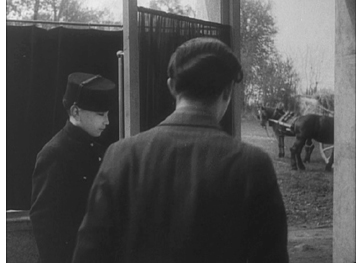 work, suggesting that his serials, though a decade old and more by the end of the 1920s, retained their hold on the Surrealist imagination.
work, suggesting that his serials, though a decade old and more by the end of the 1920s, retained their hold on the Surrealist imagination.
Henri d’Urself’s La perle (1929), is quite self-consciously a Surrealist work about a young man who keeps trying to buy and deliver a pearl necklace to his beloved, only to give it away to a lovely thief who tries to steal it from his hotel room. The thief is only one of several women lurking in the hotel corridors, all dressed in skin-tight body suits that recalls those worn by Musidora in her immortal role as villainess Irma Vep in Les Vampyrs. In true Surrealist fashion, although the hero enters a jewelry shop in a bustling street of a large city, he exits the building directly into country scene (right).
The last and latest of the films in the set is Ernst Moerman’s Monsieur Fantômas (1937), an intermittently 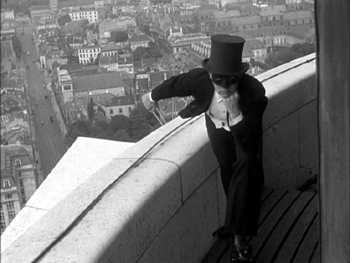 amusing homage to the super-villain of Feuillade’s 1913 serial. Traveling the globe in search of his true love, Fantômas (left, imitating his famous pose from the film’s posters) apparently commits a murder and is investigated by Juve, Feuillade’s clever but perpetually thwarted opponent. Filming on virtually no budget, Moerman set his action mainly on a beach and in an old cloister, thus allowing him to add some of the anti-religious touches so beloved of the Surrealists.
amusing homage to the super-villain of Feuillade’s 1913 serial. Traveling the globe in search of his true love, Fantômas (left, imitating his famous pose from the film’s posters) apparently commits a murder and is investigated by Juve, Feuillade’s clever but perpetually thwarted opponent. Filming on virtually no budget, Moerman set his action mainly on a beach and in an old cloister, thus allowing him to add some of the anti-religious touches so beloved of the Surrealists.
A bit of six-degrees-of-separation trivia: Fantômas is played by Jean Michel, the future father of French actor-singer Johnny Hallyday, who stars in Vengeance, the Hong Kong film by David’s friend Johnnie To that’s playing at Cannes this year.
The Belgian avant-garde cinema of this era is not a little backwater that merits a quick look only by specialists. Storck’s and particularly Dekeukeleire’s works are as sophisticated and challenging as almost anything that was going on in experimental filmmaking of the era, though the latter’s films were so idiosyncratic that they had no noticeable influence.
Back in 1979, when I learned about Dekeukeleire, I was so impressed that I sought to bring him some attention. I wrote an article, “(Re)Discovering Charles Dekeukeleire.” As the title suggests, Dekeukeleire hadn’t fallen into obscurity but had languished there from the beginning. Unfairly so, as I argued in the article, which was published in the Fall/Winter 1980-81 issue of the Millennium Film Journal. With this new DVD set making his and his colleagues work more accessible, I am inspired to revive my old article, which helps explain, I hope, some of what seems to me so original and daring about his early films, particularly Impatience and Histoire de detétective. The piece was written in the pre-digital age, and scanned .pdfs would probably be scarcely readable. So I plan to retype the thing and post it in the articles section of David’s website as soon as possible. [June 4: Done! Now available here.]
I hope that now devotees of animation and experimental cinema will seek out both these DVD sets. The Belgian one is in the PAL format, but without region coding. The Reiniger is also PAL, region 2 coding.
[May 23: Thanks to Harvey Deneroff for a correction concerning the American DVD of Prince Achmed.]












